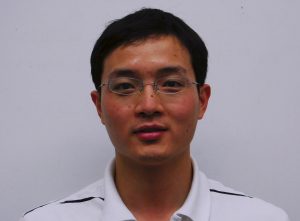“FOUR WAVE MIXING IN Si3N4 MICRORESONATORS”
Presented by Dr. Qing Li
NIST Nanofabrication Group
Microresonators with high quality factors provide an important platform for nonlinear optics, which can significantly reduce the required pump power and device size. Here, we discuss two nonlinear applications based on four wave mixing in Si3N4 microring resonators. The first application is to demonstrate efficient and low-noise single-photon-level frequency conversion using four wave mixing Bragg-scattering process. With less than 60 mW pump power, we are able to achieve efficient intra-band frequency conversion in the 980 nm band (efficiency up to 25%) and inter-band frequency conversion between the 980 nm and 1550 nm bands (efficiency up to 60%). The background noise is also measured to be low enough to allow for proof-of-principle quantum frequency conversion experiments. The second application focuses on the demonstration of phase-coherent, octave-spanning frequency combs, which can potentially lead to chip-scale frequency/time standards. We will discuss the dispersion/coupling design for the generation of such wideband combs, and the experimental routes to observe low-noise soliton states.
Qing Li i s a CNST/UMD Postdoctoral Researcher in the Nanofabrication Research Group. He received a B.E. in Electronics Engineering from Tsinghua University, China and a Ph.D. in Electrical Engineering from Georgia Institute of Technology. His doctoral research focused on the design and demonstration of compact and low-loss microcavity resonators in both silicon and silicon nitride platforms for on-chip interconnects and for signal processing. He is working with Kartik Srinivasan developing techniques for chip-scale, silicon nitride photonic interfaces
s a CNST/UMD Postdoctoral Researcher in the Nanofabrication Research Group. He received a B.E. in Electronics Engineering from Tsinghua University, China and a Ph.D. in Electrical Engineering from Georgia Institute of Technology. His doctoral research focused on the design and demonstration of compact and low-loss microcavity resonators in both silicon and silicon nitride platforms for on-chip interconnects and for signal processing. He is working with Kartik Srinivasan developing techniques for chip-scale, silicon nitride photonic interfaces
for interrogating rubidium atomic systems and chip-scale frequency conversion photonic interfaces in microcavity resonators.
